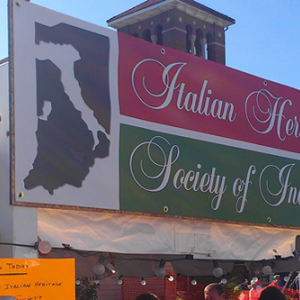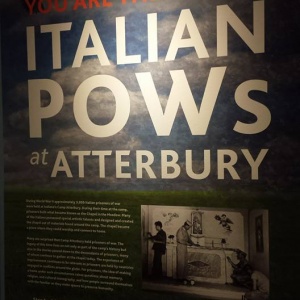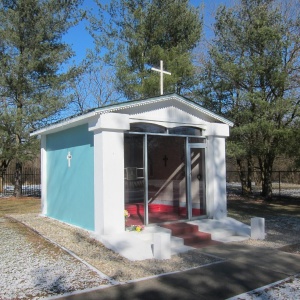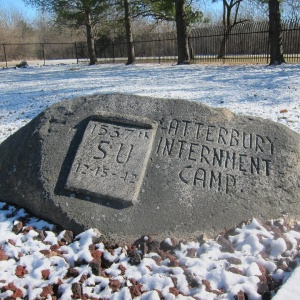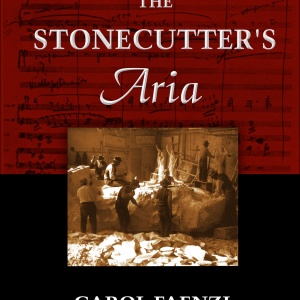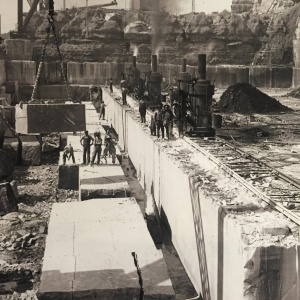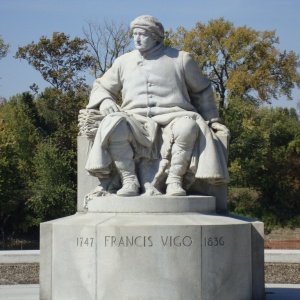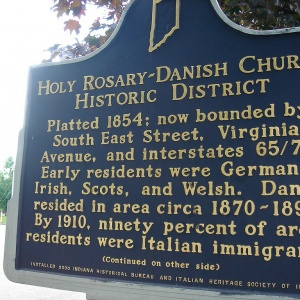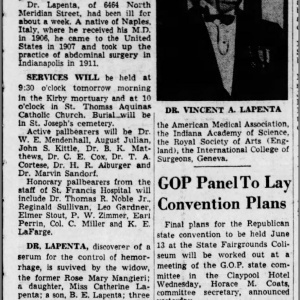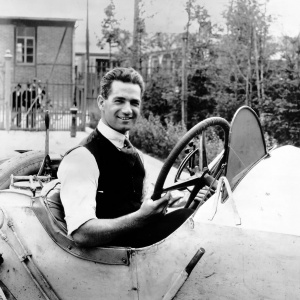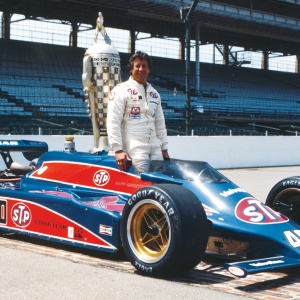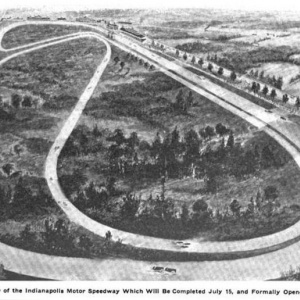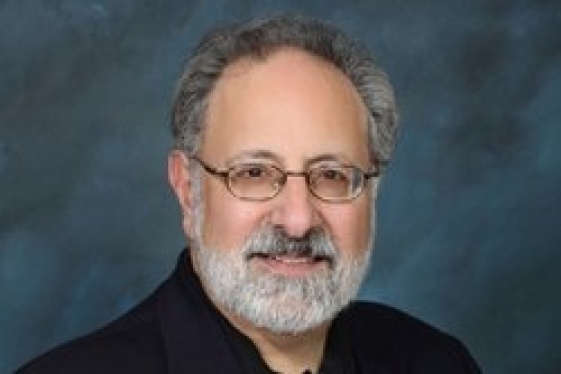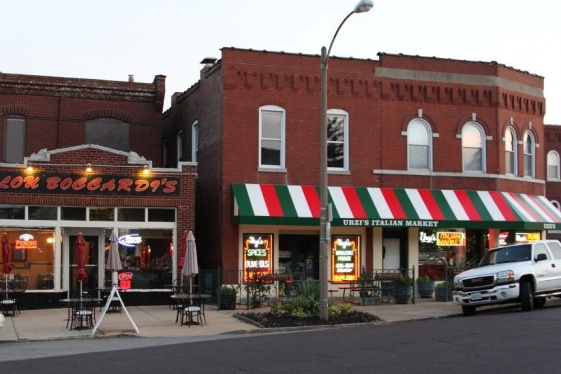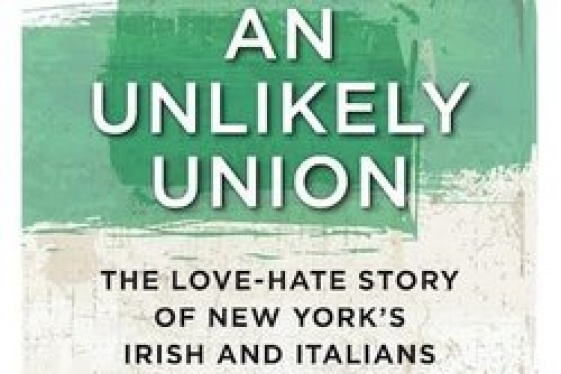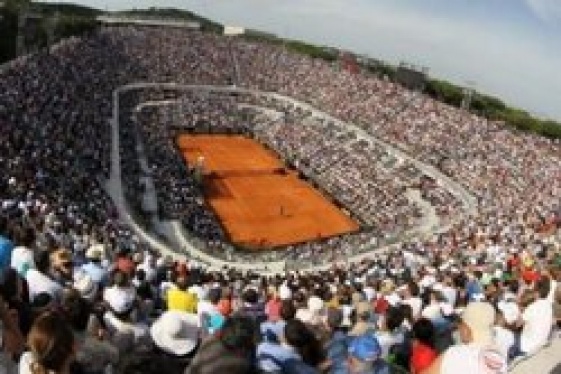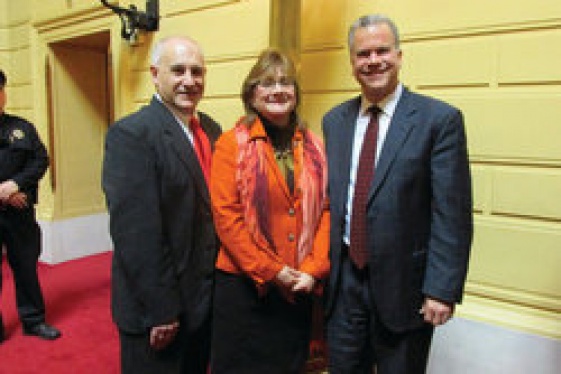
Carol Faenzi (Member of the Board of Directors of the Italian Heritage Society of Indiana)
Una storica cappella, un gruppo orgoglioso delle proprie origini, una meravigliosa parrocchia, una storia di emigrazione: benvenuti nell'Italia in Indiana

Carol Faenzi is a board member of the Italian Heritage Society of Indiana and also the author of "The Stonecutter's Aria", a book that tells stories about Italian emigration to the US. She's the perfect person, a kind and proud Italian American who lives in Indiana, to talk about Italy in the "Hoosier State". We thank her and welcome her on We the Italians
Carol, you are on the Board of Directors of the Italian Heritage Society of Indiana. Please tell us more about the story and the activities of this club
The Italian Heritage Society of Indiana was formed in 1993. It came out of a collaboration between 600 people of Italian descent and the State of Indiana who formed a commission to celebrate the 500-year anniversary of Columbus discovering America.
We are a nonprofit based in Indianapolis, and our mission is to educate, promote and share the Italian culture with the Indiana community. Our activities include celebrating traditional festivals like Pasquetta and Carnevale, but we also have created a very vibrant set of activities that we engage the community in. For example, we collaborate with the Indianapolis Opera, organizing performances. We offer language classes, and we also offer free public lectures focused on the different regions of Italy. We are a sponsor for the Italian Film Festival. And we just started a series of cooking classes.
Is there a festival, too?
Yes, it’s organized by the Holy Rosary Parish in Indianapolis, which is where the Italians moved to in the first decades of the 20th century. The Holy Rosary Parish is still very active, it is known as the Italian parish, and every June there is a street festa, which includes a procession ceremony at the church as well as booths that focus on food and music and anything that has to do with Italy and the Italian American culture.
Last March an 18-month long exhibit opened at the Indiana Historical Society: “You are There 1943: Italian POWs at Atterbury.” Could you please describe it?
Camp Atterbury comes from the name of a brigadier general who was born in Indiana and served in World War I: but that camp was not formed until 1942, primarily to provide training for the US army for World War II. It had hospitals, it trained medical personnel, and one of its main functions was to serve as an internment camp for Italian and German prisoners of war. So, the first POWs to arrive there were Italians: they were captured in North Africa, and it is said that upon arrival, some of them thought that they were in India. They didn’t really know where they were. Many of them were ill, but they were given very humane and kind treatment at the Camp. And while it was regimented, they were given a lot of privileges: to send and receive mail and they created a bocce court for themselves.
Indiana has a lot of farmland, so they did agricultural work which many of them were used to doing.
My understanding was that the atmosphere was very cordial with the soldiers and the POWs. I think that the POWs were happy to be out of the war. In fact, a story is told that one of the POWs tried to escape when he heard a rumor that they were sending him back. That was the only escape attempt.
At some point, they asked the Commander if they could build a chapel. The Commander did give his permission, but the materials for it would have to be found in the camp. They began in earnest and the building has come to be known as the Chapel in the Meadow. They painted a crucifix, angels and the Madonna, St. Anthony, from pigments they made from berries, plants, even their own blood.
At the end of the war, when the prisoners were freed, it’s interesting that several of them stayed behind and married local girls and some of their descendants still attend the Mass that we say every August at this chapel. The chapel was not torn down after the war, but deteriorated over time. In 1990s, the Italian Heritage Society decided to restore it. That's when we started to celebrate it every year and we still do.
It’s a fascinating slice of Italian American history that not many people know about. The Indiana Historical Society of Indiana, one of the most prestigious museums of its kind in the United States, thought the story should be told, so we were invited to collaborate with them. We’re one of the major sponsors of this interactive exhibit, which is called “You Are There”. Not only have they recreated the Chapel, they hired actors to play the parts of the POWs, the commander, the chaplain. So, one is transported back to 1943 watching the POWs paint. Visitors can speak with them and interact with them, ask them questions; it’s very well done.
In 2005 you published a book called "The Stonecutter's Aria." It is a story based on your Italian immigrant ancestors …
My great grandfather was a marble carver from Carrara, Italy. He emigrated in the early part of the 20th century and made his way to Indiana. The southern part of the State has a massive limestone belt that is the primary reason source for most of the limestone monuments and iconic buildings across the US, including the Empire State Building and the Pentagon. It's a very particular type of limestone. And because limestone and marble are very similar in their geology, a lot of stone carvers were recruited to settle in Indiana. It was the time when America was starting to build those monuments and they needed the fine hands of these master carvers.
My great-grandfather was trained in gothic tracery in Carrara and so he was one of many who came here. My grandmother, his daughter Olga, told me these stories and there came a time when I went to Italy on a sabbatical year from my career in New York City. I was kind of burned out and I decided to write those stories down, and it turned into a book. The book was published in 2005, and it changed my life. I didn’t go back to my corporate career. Because the story is universal, I decided to offer programs and workshops to inspire people to preserve their own family stories and rituals. The book is still very active with book clubs and also has resulted in my creating small group tours to Tuscany, following the places in my story.
The book is a novel right?
Yes, I wrote it as a novel because while I did an enormous amount of genealogical research, it was the stories I wanted to tell. I wanted people to have insight into their own family tales, to share them with the present and the future generations, to keep them alive.
Let's talk about Italian emigration to Indiana. When did the Italians arrive? Where did those Italians come from, and who they were?
Yes there is a lot to say about it. The first Italian that we know of who came to the Indiana territory was Francesco Vigo, during the Revolutionary War. He was a fur trader who made his way from the Piemonte region of Italy to Saint Louis. During the war he became a patriot, serving as a spy for the patriots against England. After the War, he was one of the founders of the Vincennes University, one of the oldest in the country.
Fast forward to the mid 1800s, when the Italians started coming in larger numbers, primarily because of the advent of the railroad. Indianapolis isstill known as the Crossroads of America. Anything going north, south, east, or west, especially at that time with the train lines, came through Indianapolis: and many Italians saw that as an opportunity. Many of them established fruit and produce businesses, some of which are still in business today.
Many different types of people came here. I have already mentioned the stone carvers. Others became coal miners in Northern Indiana. One third of the immigrants who came to that part of Indiana during those years were Italian.
A few weeks ago you wrote an article talking about the incredible story of Dr. Vincent Lapenta from Indianapolis. It was a story I didn't know, would you please summarize it for our readers?
Dr. Lapenta is a fascinating person. He was born in 1883 on the island of Ischia, and raised in Naples. His father was an army officer who served under Garibaldi and they were a prominent family. Vincenzo got his medical degree in Naples and immigrated to the United States around 1906. He got another degree at Harvard Medical School and then he decided to come to Indianapolis, most likely because we had no doctor here to serve the Italian community. He arrived in Indianapolis around 1910.
He became chief surgeon at St. Francis Hospital and specialized in abdominal surgery, but he was known as the Italians’ doctor. My great aunts and other relatives remember him, he was a very beloved figure in Indianapolis. Dr. Lapenta delivered babies, and had a very prominent home on one of the most beautiful streets in Indianapolis. He was a dashing figure, often seen with a monocle, a tuxedo and wearing a sash with his many medals on it. He was the Royal Consul of Italy in Indiana, and a member of the Royal Society of the Arts in England.
Much of this recognition came because he had made several important medical discoveries. The one he’s most famous for is one he created towards the end of World War I, a hemostatic serum that did one thing: it stopped the bleeding. He was decorated both in Italy and United States and that started his prominence. He went on creating medications throughout his life.
In the 1930s, he created a drug to boost the immune system of his patients in the hospital. It came to be known as “substance R” and was very successful, but for whatever reason over the decades this drug was lost, forgotten. It wasn’t until the AIDS epidemic occurred that Substance R was rediscovered. It was one of the first drugs that was used to treat AIDS patients, 60 years after he created it.
The tragedy of this man’s life was that he never obtained his American citizenship. He was married, he had two children, but he never got his citizenship. So when World War II resulted in Italy becoming an adversary, he was one of 27 people in Indianapolis who were rounded up and taken to Fort Benjamin Harrison to be incarcerated. He was there for about 18 months and never recovered from the humiliation. In fact, shortly after his release, he fell ill, was admitted to the hospital and died a week later.
His obituary doesn’t mention his incarceration. But it does mention that the pall bearers and those who remembered him at his funeral saluted him as a victim of war. I wrote an entire chapter about Dr. Lapenta in my book.
The Indianapolis 500 is one of the most famous sport events in history. Before the triumph of Mario Andretti in 1969, we know that one of the first winners was an Italian American champion, Ralph De Palma, right?
Yes, that’s true. The Indianapolis 500 began in 1911 and was won by De Palma in 1915. But he’s really better known for a race he lost, which was in 1912. He led almost all of the 200 laps but when it came to the last 2 he had a problem with his car and they had to push it over the finish line. The car, a Mercedes Benz, is on display at the Indianapolis Motor Speedway Hall of Fame Museum.
Andretti won in 1969, but between 1915 and 1969 there were three other Italians who won Indianapolis 500 in 1916 (Dario Resta), 1925 (Peter DePaolo) and 1935 (Kelly Petillo). We waited a long time for Mario to win, and now we are waiting even a longer time for another Italian to take his place.
Are there any Little Italies, or places that are particularly important to represent Italy in Indiana?
The Holy Rosary Parish is the main one in Indianapolis. The neighborhood continues to be known for its Italian roots.
And then there is the city of Clinton, where the coal miners lived. They continue to honor the Italian culture and hold a very well attended celebration every September.
Are there many new Italians in Indiana, recently emigrated to study or work or teach?
We have three major universities in Indiana, where there are comprehensive Italian study programs: Purdue University, Indiana University and Notre Dame.
The pharmaceutical company, Eli Lilly is a major employer here, and many of the Italians who have come to Indiana in the past few decades are working in that industry. And of course, we have Italians here connected with the automotive industry.
A well known Italian American living in Indiana is Angelo Pizzo. He’s an Oscar Nominated screenwriter for the most popular American sports film, a movie called "Hoosiers," based on an Indiana high school basketball team. He was raised in and then returned to live in Bloomington, Indiana where he continues to work in the film industry.
Do people from Indiana appreciate Made in Italy? Is there something that Italy can do to improve the export of Italian products to your State?
Yes, I do think that people here are very attracted to genuine products Made in Italy. The focus has been on the automotive industry. For example, the Dallara Car Factory is in Speedway. Indiana also has worked with turbine engineering plastic firms from Italy who now have a presence in the State. So, I think there is a growing interest in Italian products and innovation, but there is a lot more to do and it has to do with education. So much emphasis is put on the Italian American culture which is great but it's different from Italian culture, isn't it? The Italian Heritage Society of Indiana endeavors to honor and promote both. We actively engage with entrepreneurs who are creating businesses around the Italian culture in Indiana and this is growing. We would welcome the opportunity of hosting Italians who are interested in exploring a marketplace in Indiana. I believe it has much potential.
You may be interested
-
'Phantom Limb': A Conversation With Dennis...
Dennis Palumbo is a thriller writer and psychotherapist in private practice. He's the auth...
-
“The Hill” St. Louis’ Little Italy
When the fire hydrants begin to look like Italian flags with green, red and white stripes,...
-
2015 Bocce Bash!!
Please join Mia Maria Order Sons of Italy in America Lodge #2813 as we host the 2015...
-
An Unlikely Union: The love-hate story of Ne...
Award-winning author and Brooklynite Paul Moses is back with a historic yet dazzling sto...
-
Former Montclair resident turns recipes into...
Former Montclair resident Linda Carman watched her father's dream roll off the presses thi...
-
Italian Open's History and Records: A tale o...
For Italians, and Romans in particular, the Open is not just a tennis tournament where cha...
-
Jean Lenti Ponsetto Honored as National Ital...
The National Italian American Sports Hall of Fame is proud to announce its inductees and h...
-
Polisena delivers address as state lawmakers...
"Italian-Americans came to our country, and state, poor and proud," Johnston Mayor Joseph...






